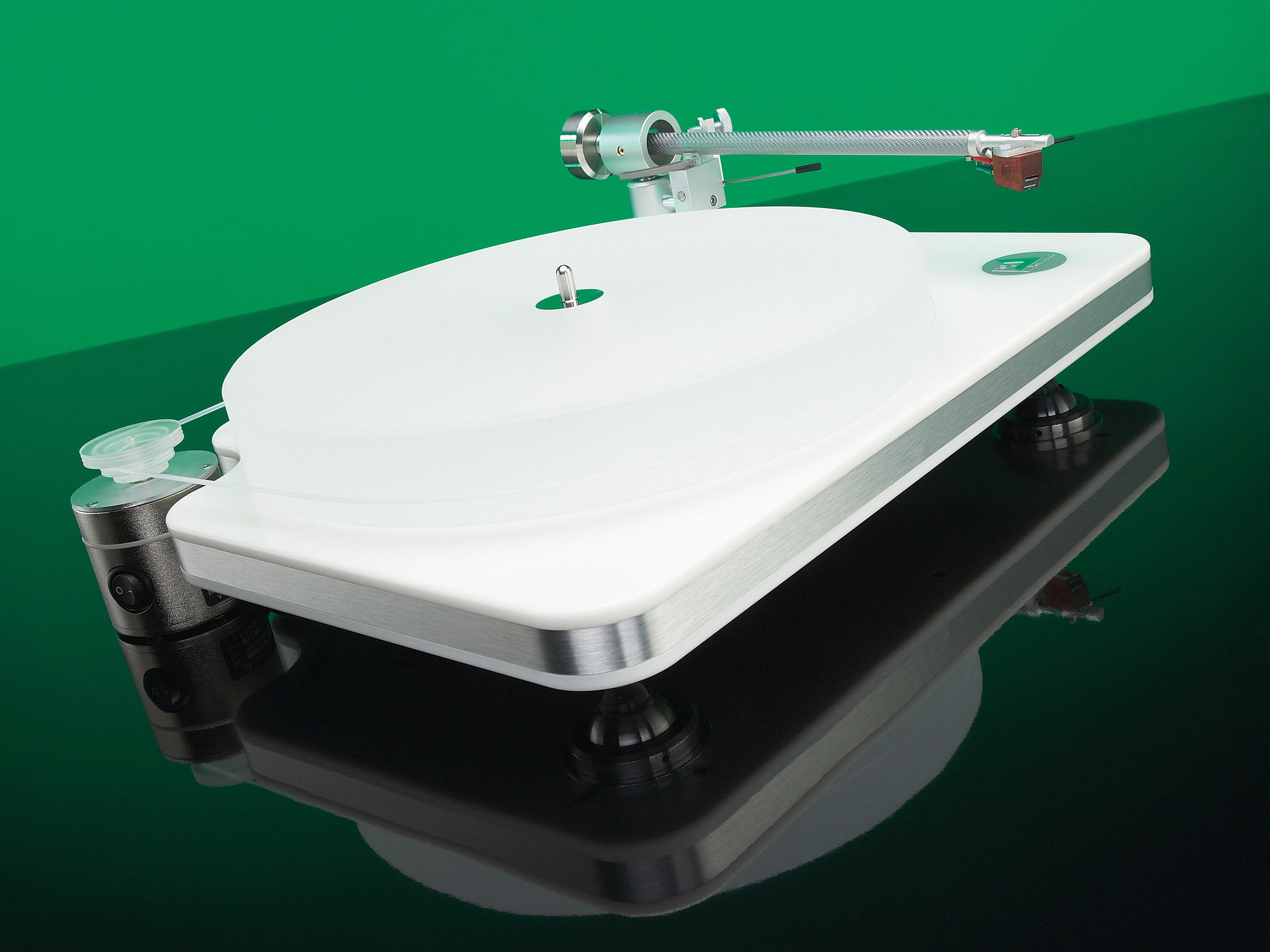TechRadar Verdict
The floating platter rids the sound of the signature imposed by the turntable plinth, and our LPs are reborn. Cor!
Pros
- +
Superbly uncompromised sound
Good price
Cons
- -
No obvious failings
Why you can trust TechRadar
You might have been mistaken for thinking that all the innovations in turntables had been long done with. Now well into its dotage, the senior format not only refuses to die off, but also continues to break new ground.
Clearaudio is unquestionably leading the charge in modern turntable development, and - from here at least - it doesn't seem like vinyl's last hurrah.
The Performance is a fine example of how Clearaudio continues to push the audio envelope. Looking similar to the Ambient turntable, but with a less over-engineered power supply, and very much in line with the Champion decks that came before, the new Performance has an ace or two up its bearing.
The Performance features a ceramic alloy bearing material for the main shaft, to dramatically reduce friction. That alone would be dandy in its own right, but the base of the deck and of the bearing housing feature donuts of magnetic material that repel one another - without the main acrylic platter to mass load the bearing, the housing floats toward the top of the bearing shaft.
This means that the platter effectively floats on air. The chaps at Clearaudio are jolly good eggs, so this bearing is offered as an upgrade to all existing decks, except for the entry-level Emotion.
The Ambient had a delicious, super-density, bullet-proof Panzerholtz material sandwiched between the two brilliant-white synthetic marble layers in the main chassis. The Performance is more humble in plinth materials; the synthemarble is still there, but the Panzerholtz sandwich is replaced with more 'umble slice of MDF, hidden from view with a neat aluminium band.
The motor is physically removed from the deck itself (it sits in a cutaway top left of the plinth) and is essentially a drive-damped motor in a housing with a speed changing spindle and a round-profile belt. The motor has enough torque to move the 40mm-thick acrylic platter, but does quiver a bit for the first few seconds and many will want to give the platter a little push on start-up.
The Performance comes supplied with an arm and cartridge. The arm is identical to the one fitted to the Ambient - the Satisfy Carbon Fibre - while the cartridge is the extremely fine, wooden-bodied Maestro moving magnet design. There's even a little clear plastic clamp to hold the disc down.
Hardly noticeable
The deck, when set-up properly, has one of the least obvious sonic signatures you can get from a turntable. The plinth's influence on the sound seems minimal and all that's left is you and the vinyl. Well, almost.
There's an arm and cartridge there, too. The Satisfy is easy to set up, but also easy to fiddle with. If you're the sort who can never 'fit and forget', you're in for a lot of tweak-time (secretly, I think that's more of a plus than a minus for those who enjoy a nice tweak).
Fortunately, that means the arm has a degree of freedom that almost matches the turntable itself, and it's a low-signature product, too. Which just leaves the cartridge... and that sounds open, fast and very natural, in the manner of the very best MM cartridges.
In fact, the Maestro is one of those MM cartridges that challenges the received wisdom that moving coil cartridges are intrinsically better (you can improve on the sweetness of the cartridge without sacrificing the speed with a good MC, but that would more than double the price of the turntable).
Its only real limitation is that it sounds dry with some 1970s recordings, but this isn't really a stumbling block, as many 1970s recordings do sound arid on modern equipment.
It's perhaps the most telling aspect of the Performance's, er, performance that sonic descriptions point toward the sound of the arm or the cartridge. When it comes to the turntable itself, the reviewer's job gets very hard indeed... because there's not a great deal to say!
It's as fast, dynamic and precise as the record on the platter and as quiet as the phono stage it's hooked to. And that, quite frankly, is high praise indeed.
We suspect that if you had a power supply akin to the one with the Ambient, with a more accurate speed control, the sound would improve by making the deck disappear still further. Perhaps if you changed the plinth structure, it would sound slightly deeper or even more accurate. But it's already so good, it's hard to pinpoint where improvements could be made.
If you want to liberate your vinyl, the solution seems to be to float the platter on air. You'll be surprised at how good it can be.
Tech.co.uk was the former name of TechRadar.com. Its staff were at the forefront of the digital publishing revolution, and spearheaded the move to bring consumer technology journalism to its natural home – online. Many of the current TechRadar staff started life a Tech.co.uk staff writer, covering everything from the emerging smartphone market to the evolving market of personal computers. Think of it as the building blocks of the TechRadar you love today.
